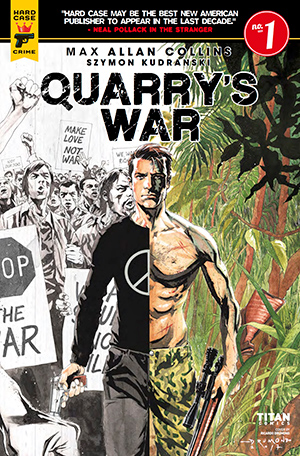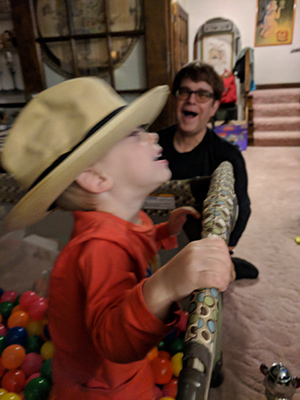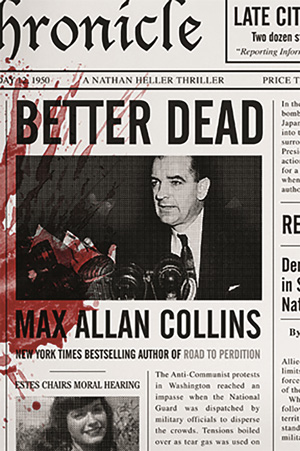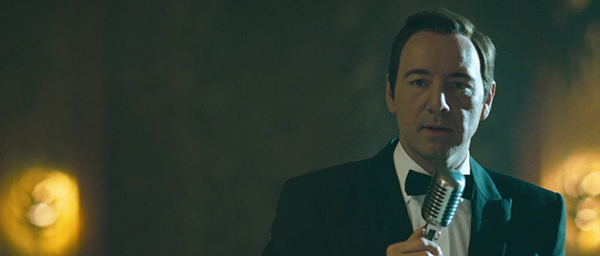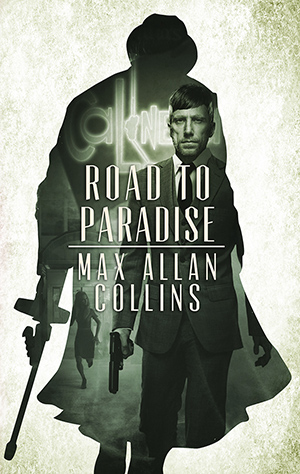I’m on a Bobby Darin group on Facebook, where several people have talked about throwing away their DVDs and CD soundtracks of Kevin Spacey’s 2004 Darin biopic, Beyond the Sea.
I get it. While I am at times queasy over the witch hunt feel of today – whose career will be ruined tomorrow? – seeing the creepy Roy Moore defend himself by attacking his attackers (the women accusing him, the Washington Post, Democrats in general, the media at large) reminds me that a verdict in a courtroom isn’t always necessary. Sometimes a legitimate verdict can come from the courtroom of public opinion, if the allegations have been vetted by journalists with the credentials of those at the Post. When the number of allegations grows to critical mass, as with Cosby and Spacey, that verdict has the ring of truth.
I can only say that Kevin Spacey – whose love for Bobby Darin’s work was deeply felt – was very kind to my wife, son and me when he performed his Darin tribute concert at the House of Blues in Chicago in December 2004.
Spacey and I had a connection through Sam Mendes, who directed both American Beauty and Road to Perdition. When Barb, Nate and I went to the House of Blues, I brought along a signed copy of Road to Purgatory to send backstage to Spacey. I had ordered tickets for the event the day they went on sale, but when we arrived, we found most of the main floor was reserved for some special party. We were sent high up to nosebleed seats. The atmosphere created by Hell’s Angel type bouncers/ushers was decidedly unfriendly.
When I went downstairs to try to convince someone with the House of Blues to send the book backstage, I was treated harshly (I will never return to that venue). By bribing one, I finally got the book accepted, having the strong feeling it would be tossed in the trash as soon as I was out of sight. Upstairs, we crowded around a tiny table with a bunch of strangers and my family studied me with the cold-eyed “What have you gotten us into this time, you incompetent fool?” expression that I know so well.
Then, over the intercom, I was called to come downstairs to the front of the club. I went down and was told that Mr. Spacey wanted to meet us after the show – there was a scheduled meet-and-greet – and that we were to be given special seating. Chairs were set up for us (by some of the same crabby biker types who had treated us so badly) right in front of the sound board, dead center, best seats in the house.
Spacey came on and did a fine show. Afterward, he greeted us warmly and he and I talked Bobby Darin for about five minutes. He was friendly and articulate and I thanked him especially for making me look good in front of my family (something that rarely happens).
Which brings me to the today’s topic, as Bob and Doug McKenzie would say: Is the work of an artist suddenly invalid because bad conduct is revealed? And is there any coming back from a scandal like this and the behavior it represents?
I’m really just asking. With someone like Cosby, I think the body of work is so large and so at odds with his actual wrongdoing that it’s hard to imagine sitting down now with one of his comedy albums or TV shows. I love the movie Hickey and Boggs but haven’t watched it since Cosby’s fall from grace. I can’t imagine I’ll ever look at my complete DVD set of I, Spy again.
On the other hand, I am a huge fan of Al Capp and Li’l Abner. I have said numerous times that it’s not only my favorite comic strip, but in my opinion the greatest of all comic strips. It had everything – sharp satire, slapstick humor, adventure, suspense, great art, and…beautiful girls.
Capp’s women were outrageously sexy, and a hidden sexual content – the frequent use of the number 69, phallic mushrooms clustered around trees with vagina-like knotholes, the positioning of Shmoos also with phallic intent – was enough to encourage Capp’s former boss, Ham Fisher, to try to get his ex-assistant thrown out of newspapers by going around showing editors examples of supposed pornography smuggled into Abner. Unfortunately, Fisher doctored the examples to make them look worse, and got kicked out of the National Cartoonists Society for it, which led to Joe Palooka’s daddy committing suicide. (See my novel, Strip for Murder, for more.)
Late in his life, when longtime liberal Capp had suddenly gone right wing (as some old rich white guys do), he became a sexual predator. On college campuses, where he gave lectures, he would arrange to meet with coeds and came onto them; he did the same for young actresses who were supposedly interviewing for parts in various Abner TV series. No reports of rape, but plenty of obnoxious behavior, which eventually was exposed (shall we say) in the press. Capp didn’t kill himself, like his old boss, but he killed his strip and died a few years later.
Still, I love Li’l Abner. I have a number of Capp originals framed and on my wall. Is that wrong? Am I supposed to banish his lifetime of brilliant work to the scrap heap of history because he was, in his later years, a dirty old man? Also, am I supposed to be surprised Al Capp liked sexy young women?
Do we think Frank Sinatra would have held up to this kind of scrutiny? How about rock ‘n’ roll stars? Does anyone really want to turn over the rock that is Mick Jagger, much less Keith Richards? Did those lads from Liverpool have their way with some underage groupies? Would you be shocked if they did? Shine the spotlight on rock ‘n’ roll and it’ll be the sexual apocalypse.
The Millennials did not live through the Sexual Revolution, which created a climate of carnal activity for a generation who’d been brought up innocently in the fifties. Beaver was the last name of a kid named Cleaver; then suddenly it wasn’t. I don’t excuse the behavior of any of my generation, but I’m not sure we should have to sit for a jury of kids who didn’t live through it. Free Love and feminism were brewing at the same time, and brother was it a strange brew.
During those years, when things were loosening up sexually, homophobia went on unabated. Closeted gays lived an outlaw life style by definition. Like a lot of straight guys, I had gay men come onto me – the first time freaked me out. Later I realized that they were as uneasy and even more afraid than I was. Roy Moore still wants gays thrown in jail or worse. Might someone like Kevin Spacey or George Takei make a mistake, a misjudgment, a misreading of another male, living as they did in a world of shadows? How harshly should we judge gay men and women who grew up in the second half of the Twentieth Century?
Not excusing anything. I certainly abhor what these famous men, straight and gay, have been getting away with, almost always operating from a position of power. But I wonder – is there any chance for redemption for somebody like Kevin Spacey or Louis C.K.? Can they come back from this? Should they? Can I watch Baby Driver with a clear conscience, or ever revisit House of Cards? Spacey’s scenes are being cut and re-shot for the soon-to-be-released All the Money in the World – should his entire cinematic legacy be similarly snipped away? Must I forget the kindness he showed me and my family?
Can I listen to Frank Sinatra without thinking about Sam Giancana?
I really am wondering.
But I do know plenty of great art has come from terrible people. It’s a subject I’ve been wrestling with, and discussing, for years – long before the daily exposure of this star or that one as a sexual predator.
* * *
The new Murder on the Orient Express isn’t bad. It’s quite sumptuous looking, and is faithful enough to the Christie source material to receive an approving nod from me. True, some action scenes – including questionable heroics from Hercule Poirot – seem like pandering to an audience dumber than anybody who would likely go to a movie called Murder on the Orient Express. But it’s a good, old-fashioned (in a positive way) movie. It’s just not as good as the 1974 original – actually, not even close.
Refresh your memory and look up the cast of the ‘74 version, and see names like Connery, Bacall, Guielgud, Widmark, Redgrave, Finney and on and on. Such giants no longer walk the earth – well, a few still do. This Murder is committed by a cast about half of whom are names – Cruz, Depp, Gad, Dafoe, Jacobi – but hardly the superstars of old. Depp, for example, is quite good…until you compare his performance to Richard Widmark’s. In ‘74, Albert Finney made an oddly cartoonish Poirot (though it worked), while director/star Kenneth Branagh has to compete with David Suchet’s definitive Poirot. In fairness, this one is better than Suchet’s Murder on the Orient Express, a rare misfire for that wonderful series.
Barb and I also took in Thor Ragnarok, which is very funny while retaining the expected spectacle and superhero heroics. Marvel seems to have learned a lot from the Guardians of the Galaxy movies.
* * *
Here’s a nice review of Fate of the Union.
And check out this look at Mike Hammer and Mickey Spillane.
M.A.C.
